Alaskapox virus, a rare but concerning pathogen, recently claimed the life of an individual in Alaska, raising alarm among health officials. This virus, primarily affecting small mammals, poses potential risks to human health. Understanding its symptoms, transmission, and preventive measures is crucial.
State health officials in Alaska have stated that last month(January 2024) a person died from the Alaska Pox virus, which mostly occurs in small mammals and can be the cause of wounds. Since 2015, seven human cases have been reported.
Emergence of Alaska pox virus
The identification of Alaska Pox first occurred in 2015 in a woman living near Fairbanks, Alaska, and the Alaska Section of Epidemiology has reported seven cases of this virus.
Health authorities in Alaska stated on 09 February that until last month, no one had been admitted to the hospital or died from Alaska Pox, which can cause lymph node swelling and muscle or joint pain.
Transmission of Alaskapox
According to the Alaska Department of Health, of the seven individuals who have contracted Alaska Pox, six lived in Fairbanks North Star Borough, where the virus has been found in red-backed voles and shrews. Transmission of Alaska Pox between humans has not been detected.
Dr. Julia Rogers, an expert in infectious diseases with the Centers for Disease Control and Prevention, said in an interview on Tuesday that the symptoms of Alaska Pox infection are usually mild.
“There may have been cases in the past that we just didn’t pick up on for whatever reason,” Dr. Rogers said, adding that recorded cases could increase as more doctors learn to recognize it.
Story
The Alaska Section of Epidemiology, which did not release the name of the deceased from the virus, said in a statement that he was an elderly man with ties to a remote Alaskan island who was immunocompromised due to a history of substance abuse.
Alaska health officials said it’s still unclear how this person contracted the virus. According to the state health department, the individual lived in a rural area, had not recently travelled, and had no recent contact with someone who had travelled.
The person told doctors he had been caring for a stray cat at his home, which often scratched him, including one time near his right armpit about a month ago when he noticed a sore had formed, Alaska health officials said. Following the cat scratch, he was tested for other orthopoxviruses, and all tests came back negative. Still, health officials said it’s possible the stray cat was the source of the Alaska Pox virus.
Dr. Rogers said it’s possible the stray cat’s paws carried the virus from other rodents. “But we can’t say for sure what the specific mode of transmission was for this patient or for previous patients,” Dr. Rogers said.
Dr. Joe McLaughlin, Alaska’s state epidemiologist and head of the Alaska Section of Epidemiology, said in an interview that all patients with Alaska Pox have had exposure to a cat or dog, and health officials are working to determine what role domestic pets may play in virus transmission. “Because Alaska Pox is so rare, our number one message is that Alaskans shouldn’t be overly concerned about this virus,” Dr. McLaughlin said, “But stay informed.”
Related: What is Immunity Theft?
According to the health department, after feeling his wound, the person sought medical care from primary care doctors and local emergency rooms several times within six weeks. Health officials said he was prescribed several rounds of antibiotics, which did not help.
He was admitted to the hospital on November 17 because the wound had affected his ability to move his arm, and he was later transferred to a nearby tertiary care hospital, health officials said. During his hospitalization, he complained of “burning pain” and had four smallpox-like lesions on his body, health officials said.
After multiple tests, health officials said, doctors successfully ruled out cowpox, MPX virus, and other viruses. A swab of his wound was later sent to disease control and prevention centres for further analysis, which confirmed it matched other Alaska Pox cases, according to health officials.
During his hospitalization, health officials said, he began to experience worsening symptoms that included malnutrition, severe abdominal distress, and respiratory distress. At the end of January, he died from his injuries.
Dr. McLaughlin said that because people with weakened immune systems are more likely to experience severe symptoms with other orthopoxviruses, it’s important for doctors in Alaska to diagnose Alaska Pox quickly.
Conclusion
The recent death highlights the importance of understanding and addressing emerging infectious threats such as Alaskapox. Continued surveillance, research, and public health measures are essential to mitigate its impact and safeguard community health.









